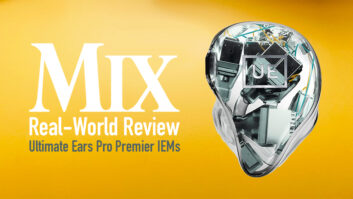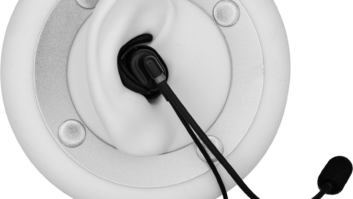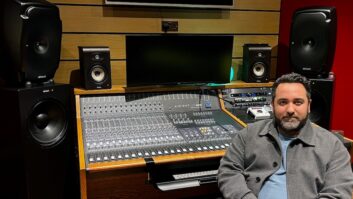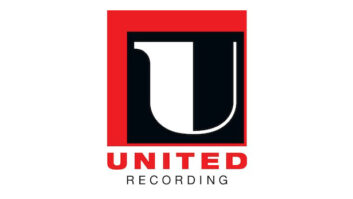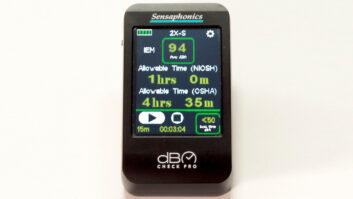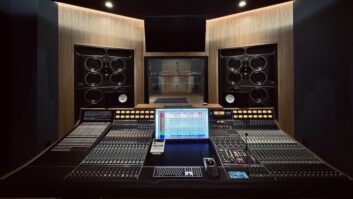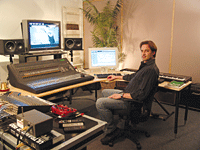
Scott Sanders–right at home in Ear Candy Studios
Sound design engineer Scott Sanders built his career in the film and music industry with as much artistry and care as the sound files he’s developed for many high-profile projects. The multifaceted Sanders has recently contributed to movies such as Ladder 49 and Ray, and has several upcoming projects, including Dark Water and Rob Zombie’s The Devil’s Rejects (both due out this year). Sanders’ credits also include work with Sundance Film Festival entry Happy Endings (2005) and producing and engineering for bands such as Night Shift Records’ Big Japan (a rock quartet that includes actors Adam Brody from The O.C. and Brett Harrison). These projects and many others were done in an adapted garage in Valley Glen, Calif., dubbed Ear Candy Studios.
Sanders got his start when Cherokee Recording Studios hired him to work as a runner for the night shift in 1988. “Somewhere between midnight and eight in the morning,” Sanders says, “the sessions would wrap up. I’d go in and clean the studios, and the engineers would be in there finishing up. These were all world-class, top-notch engineers. I’d sit there and they’d show off what they’d done that day — the technique that they had learned or used. I can’t tell you how much I learned from those shifts.”
Cherokee eventually picked him up as an assistant engineer; later, he moved on to work at many other facilities, including Devonshire Studios and Soundelux. Sanders confides, “I feel very fortunate to have had the opportunity to spend so much time in studios before the workstations and virtual studio took over. I got the chance to really learn the nuts and bolts of signal flow and gain structure — how important all of that is. I apply that every day here, even if it is a virtual studio.”
Sanders’ “virtual” studio — previously a haven for “big-time” gamers who floated its floors and put acoustics in place before Sanders took over the space in 2002 — is a 25×30-foot room with vaulted ceilings and an up-to-date collection of gear. He runs Pro Tools|HD3 with Control|24 on a Mac G4, a Mackie 1604-VLZ Pro mixer, and Yamaha P-80 MIDI and M-Audio Keystation 49 controller keyboards. Sanders’ plug-in collection includes everything from McDSP and Focusrite to Reason, Sony Oxford, Waves and Bomb Factory. Outboard gear includes dbx 160XT and 165s, as well as a Lexicon 300L, Alesis Quadraverb, MIDIverb and TC Electronic M-One XL. Shure SM57 and Beta 58, Neumann U87, AKG C-451 and Oktava MK012 mics stand by, and 5.1 monitoring is through Mackie speakers, including three HR824s (left/center/right), two HR624s (left/right surround) and an HRS120 (sub).
For his work on the Oscar-winning movie Ray, Sanders collaborated with sound supervisor Karen Baker-Landers of Soundelux to create the sounds that accompany Ray Charles’ flashbacks. Says Sanders, “[Director] Taylor Hackford wanted something sort of subjective, sort of soft that worked [to indicate] the flashbacks. I created sounds — recorded my own breath, doing various kinds of inhales and exhales, pushes and oomphs and ahhs — and I took that, added some sweeteners and processed it to death. Then I used EQ and reverbs to spread it out into 5.1.”
Because Charles “saw” his world via sound, Sanders’ designs required that he also create a series of musical tones to accompany the film’s recurring images. Sanders says, “In those flashbacks, there was a theme that was always present: a tree where [people had hung] different-colored bottles. I got a bunch of bottles and I recorded myself blowing across the lip of them, creating a tone, filled with various amounts of liquid. I tried to create harmonic tones that would work together as a chord. I also got a bunch of crystal glasses and wet my finger and ran it across the edge and got a tone going and shook the glass to create some interesting vibratos. I recorded a library, then started putting them together, creating chordal tones out of them, and processed that in 5.1. That’s the stuff we hear, along with the bottle clinks, when we go to those moments in the film.”
Sanders’ contribution to various projects, as diverse as they’ve been, is based on his philosophy: “Basic sound effects editing is about the choice of sounds that you use to create a sound effect. You see editors creating sound with tons of stuff — but it’s really about choosing the right sound and having an ear for the right sound. It’s like creating a score, creating sounds keying off of the emotion of a given scene or instance that [allows you] to create a certain mood.”
Breean Lingle is a Mix assistant editor.

